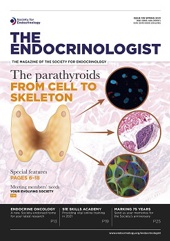The practice of evidence-based medicine requires healthcare professionals to stay up-to-date with an ever-growing body of medical literature. Medical students and junior doctors are frequently overwhelmed by the sheer volume of information available to them when learning about medical conditions. The vast majority of this is presented as reams of text in books or online. Such material can seem inaccessible, causing stress and deterring many from engaging with the latest research.1
Several studies have demonstrated the efficacy of infographics (defined as the ‘utilisation of images and data visualisation to present research in an engaging way’2) in communicating complex information to students, both in the medical field and more generally.3,4 Information presented visually is processed more quickly than simple text, and allows students to remember up to 6.5 times more information than words alone,5 improving long term memory and retention. Furthermore, the current climate of the COVID-19 pandemic has served to highlight the need for provision of robust online teaching resources. Social media, in particular, is an increasingly effective tool for increasing exposure to, and knowledge of, medical information on a global scale.6
It was in this context that a team of like-minded individuals, from a range of backgrounds and nationalities, came together with an innovative vision: to change the delivery of medical education and help people worldwide understand medicine more easily through short, comprehensible videos. Thus, Concise Medical Information Cines (CoMICs) was born.
INTRODUCING CoMICs
CoMICs is a new medical education initiative conceptualised by Punith Kempegowda from the University of Birmingham’s Institute of Metabolism and Systems Research and led by Nia Evans, a junior doctor from Royal Glamorgan Hospital, north west of Cardiff. CoMICs comprises bite-sized videos consisting of illustrations and infographics created by medical students and junior doctors. Whiteboard animations are used to simulate traditional classroom teaching and to keep viewers engaged with the content.
Each CoMIC depicts a specific disease or medical condition, from presentation and investigations to stepwise management and follow-up options. The information on each topic is based on national and international guidelines, presented at an easily intelligible level and reviewed by early career researchers and experts in the relevant field from both the UK and internationally. This ensures that the contents of the video are not only easily digestible, but accurate and based on the most up-to-date research. CoMICs is tightly intertwined with SIMBA (Simulation via Instant Messaging - Birmingham Advance), our sister organisation, which aims to provide interactive, simulation-based learning through instant messaging for medical education (see the article on SIMBA in this issue).
CREATING CoMICs

Screenshot from a CoMICs video. Credit: CoMICs
The process of creating a CoMIC consists of five steps. A medical condition is identified by a member of the CoMICs team; the selected disease is based on the simulated cases used during SIMBA sessions. Then, a medical student is invited to create a video script. A member of the CoMICs team uses this script to create a short (<5 minute) animated video.
Once made, this video is critically reviewed by early career researchers and world-renowned experts with a special interest in the relevant field, to ensure the accuracy and clarity of its contents. The finalised video is then shared publicly on various social media platforms: YouTube, Instagram, Twitter and Facebook.
The medical students and junior doctors involved in the creation of CoMICs gain invaluable experience in medical education, revision of key concepts and the opportunity to work directly with leaders in the field. Guest CoMICs reviewers also get the chance to contribute to an exciting initiative which is growing in popularity each week, and will be fully credited for the video they contribute to. Applications for guest CoMICs reviewers are now open, and early career researchers from around the world are encouraged to apply.
A new video is shared every week as part of our #CoMICWednesday initiative. So far, 25 episodes have been released, covering various complex topics in the field of endocrinology and diabetes (amongst others), to a positive response.
For more information and to watch our previous CoMICs, please visit our web page or follow us on social media: YouTube (SIMBA Simulation), Twitter (@SimbaComics) and Instagram (@simba.comics). And read about CoMICs' sister project, SIMBA, in this accompanying article in The Endocrinologist.
EMILY WARMINGTON
4th Year Medical Student, University of Birmingham Medical School
DANIA SHABBIR
5th Year Medical Student, Jinnah Medical College, Pakistan
PUNITH KEMPEGOWDA
Honorary Specialist Training Registrar in Endocrinology, Diabetes and General Internal Medicine, University Hospitals Birmingham NHS Foundation Trust, and Wellcome Trust Clinical Research Fellow, Institute of Metabolism and Systems Research, University of Birmingham
on behalf of the CoMICs team
REFERENCES
- Hill MR et al. 2018 Medical Education Online 23 1530558.
- Murray IR et al. 2017 Bone & Joint Research 6 619–620.
- Glenburg AM & Langston WE 1992 Journal of Memory & Language 31 129–151.
- Martin LJ et al. 2019 Health Professions Education 5 48–57.
- Krum R 2013 Cool Infographics: Effective Communication with Data Visualization and Design. Chichester, UK: Wiley.
- Thoma B et al. 2018 Canadian Journal of Emergency Medicine 20 300–306.







